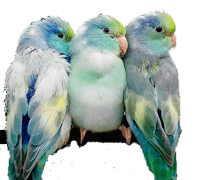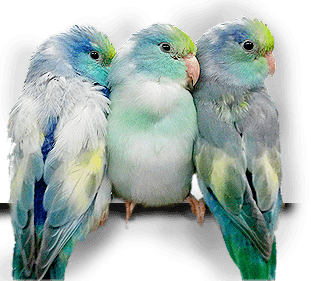
Xtreem Parrotlets has many informational pamphlets to answer many of your questions. We have designed our pamphlets to be informative and to be used as a helpful resource. We have a variety of topics and we continually add information to keep our bird owners up-to-date on avian care.
Why A Proper Diet Is So Important For Your Pet Parrotlet
Malnutrition is the leading cause of illness and death in pet birds today. Poor and unbalanced diets can lead to illnesses affecting the respiratory tract, the digestive tract, the urogenital tract, and the skin and feathers. Giving your pet bird a proper diet is the best way to ensure that your pet bird will lead a healthy and long life. To see our pamphlet on Diet and Nutrition please follow this link: Proper Parrotlet Diet
Basic Care for Parrotlets
Your pet bird’s diet is critical to its overall care. Adequate feeding plans may be developed from a wide variety of commonly available foods, or you may offer any one of the several formulated diets that are especially designed for certain species of birds by commercial companies. To see our pamphlet on Basic Care For Birds please follow this link: Basic Care For Parrotlets
Emergency First Aid
The single most important factor in reducing the number of home emergencies with companion birds is to provide a balanced diet. Proper nutrition significantly reduces the medical attention required for feathers, skin, behavior, gastrointestinal disorders, bleeding, obesity, respiratory disorders and reproductive problems and some eye conditions. To see our pamphlet on Emergency First Aid please follow this link: Emergency First Aid For Parrotlets
Signs of Illness in Parrotlets
Early signs of illness in birds is often missed by the average pet owner. A sick bird will maintain their normal appearance as long as possible. This is called “Masking”. One result of this behavior in companion birds is that by the time signs of illness are obvious, the bird may have been ill for some time. The birds that dies “suddenly” may only reflect the failure of the owner to recognize the signs of illness. To see our pamphlet on Signs of Illness in Birds please follow this link: Signs of Illness in Parrotlets
Feather Loss and Picking
The most common moult pattern is a full moult, including the wings and tail feathers. Once a year and usually just prior to the breeding season. Partial moults also occur once a year. This ensures that birds do not lose too many feathers at one time and they are not rendered unable to fly. Losing large amount of feathers revealing bare skin patches is considered abnormal and should be investigated. To see our pamphlet on Feather Loss and Picking please follow this link: Feather Loss and Picking
Toxic Foods For Birds
There are many foods that are toxic to pet birds and should not be given to them under any circumstance. Some foods can cause irritation to the gastrointestinal tract and even death. To see our complete list of Toxic Foods for Birds please follow this link: Toxic Foods for Parrotlets
Toxic Plants For Birds
Often owners do not think of the houseplant that they have inside may be harmful to their pet bird or other household pets. There are many plants that are toxic to animals and especially pet birds, as they have a tendency to chew on items. To see our pamphlet on Toxic Plants please follow this link: Toxic Plants For Parrotlets
Safe Plants For Parrotlets
In addition to our list of Toxic plants for birds we also have a list of safe plants for birds and other animals in the household. To see our complete list of Safe Plants for Birds please follow this link: Safe Plants for Parrotlets
Parrotlet Behavior Normal and Abnormal
Birds will display many behaviors including defensive, social, biting, sleeping, Inappropriate, talking, and obsessive. To see our pamphlet describing these behaviors in detail please follow this link: Parrotlet Behavior
Health Exams For Pet Parrotlets
Pet owners are accustomed to taking the family dog or cat to the veterinarian for an annual checkup, but it is even more important for a pet bird to have an annual checkup. Symptoms of disease and illness are much more subtle and early detection and diagnosis will have a favorable outcome. To see our pamphlet on Health Exams for Pet Birds please follow this link: Health Exams for Pet Parrotlers
Foot & Nail Care Diseases
Bumblefoot Disease occurs in all species of birds but most often affects birds in captivity or aviaries. Bumblefoot can be the result of poor nutrition, poor housing conditions, inactive birds, and obese birds. To see our pamphlet on this affliction please follow this link: Bumblefoot Disease

